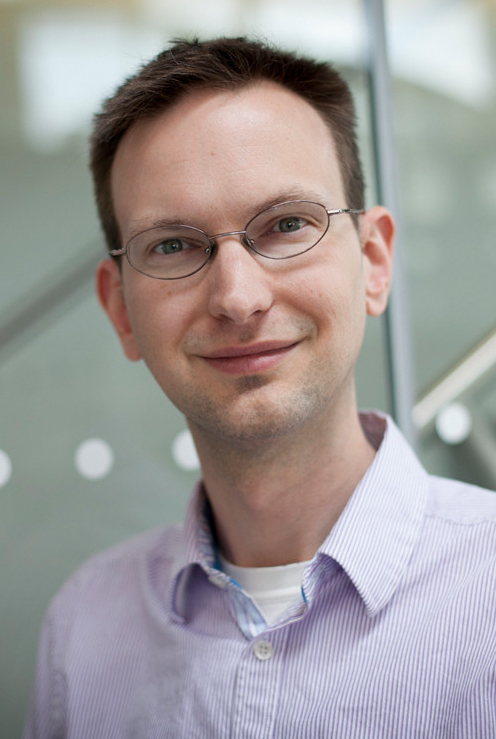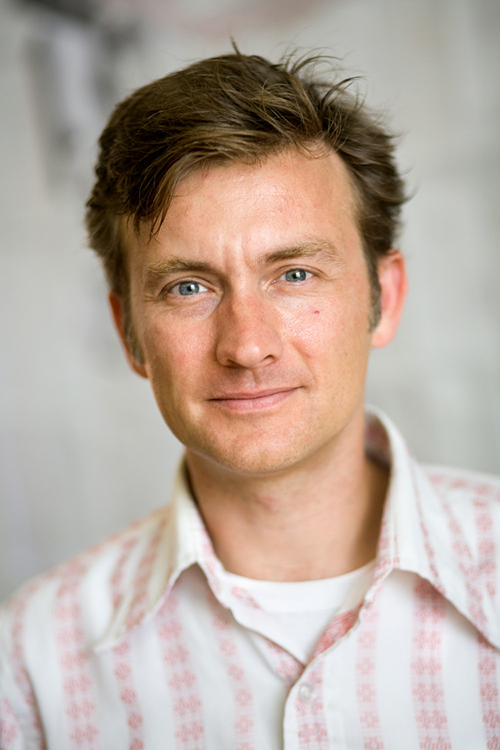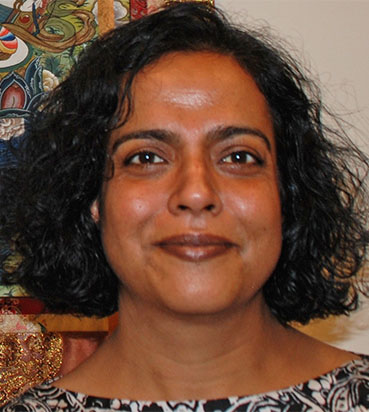Big Ideas: How technology and humanities intersect
By Linda B. Glaser



Technology has changed all aspects of our lives, even ancient fields of study in the humanities. The College of Arts and Sciences’ fourth Big Ideas Panel, part of its New Century for the Humanities celebration, explored technology in the humanities March 15 in Klarman Hall’s Groos Family Atrium.
David Mimno, assistant professor of information science, brought a unique perspective to bear on the topic. His course, Data Mining for History and Literature, introduces students to research methods in computer-assisted scholarship, including representing text documents in computational forms.
Computation is about abstraction, Mimno told the audience, while the humanities are about specifics and things “being more complicated.” His goal is to find a synthesis between these different ways of seeing the world. “Abstraction is useful but not necessarily accurate when you get down to the details,” he added.
Mimno offered the example of research he’s doing on folklore from 19th- and early 20th-century Danish stories, which were sorted into categories for publishing. His team created an algorithm to compare words across stories and within categories, a way to reverse engineer into which category each folk tale should go. The computer allowed the researchers to find the stories that cross boundaries and demonstrated uncertainty in their categorization.
This is the same type of computation used in spam filters and Google searches, Mimno noted. “It’s the humanities perspective that makes a very standard, simple tool interesting. I believe that that humanities perspective is incredibly valuable.”
Because the skills needed to do this kind of computation are specialized, most computational humanities work is collaborative, said Jeremy Braddock, associate professor of English.
But Braddock pointed out that the book itself is a form of technology – and a very consequential one. “Addressing media and technology, therefore, engages with very old questions as well as very new ones,” he said.
Braddock focused his presentation on research he’s conducting on a group of collaborative writers whose primary medium was the multitrack recording studio and the long-playing vinyl album: the Firesign Theater. The group formed at the height of 1960s counterculture and “invented a form of aural art so fully realized and so unique that even among the vast proliferation of audio work in the early 21st century, there is nothing that comes close to matching it for its ambition, complexity or sonic range,” he said.
“Rather than entering into the listener’s world and talking to them – as has become the convention of virtually all radio and podcasting – the listener is drawn into multiple worlds, multiple soundscapes,” said Braddock, demonstrating with audio clips from Firesign productions. He said that in the recording studio the group found a way of making the complex techniques of modernist literature available to a mass audience.
Anindita Banerjee, associate professor of comparative literature, is writing a book exploring the complex relationship between energy and art in Russia today, “Fuel Fictions, Energy, Art and Power in Modern Russia.” She said her residency last semester at the Atkinson Center for a Sustainable Future illuminated “the urgent need to place energy studies as a transdisciplinary whole in the webs of relations among humans and between humans and nonhuman entities, including technology, ‘nature’ (elemental, animal, vegetable or mineral) and what we call things – including waste.”
Banerjee also spoke about her previous research on science fiction, which she said is “a place from which to work out different ways of being, thinking and acting what it is to be modern: that is, in relation with the present with a view to the future. … Far from being just the realm of fiction writers, filmmakers and lately game developers, science fiction has always been co-created and co-produced by an astonishingly large community that includes scientists and engineers, philosophers, social and political activists, journalists, artists, illustrators, politicians and policymakers.
“Science fiction is not just a crucible of future thinking, but a technology of participatory futuremaking,” she added.
Linda B. Glaser is a staff writer for the College of Arts and Sciences.
Media Contact
Get Cornell news delivered right to your inbox.
Subscribe